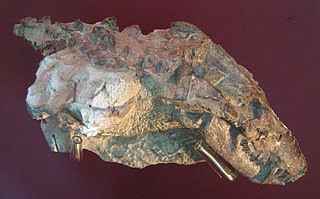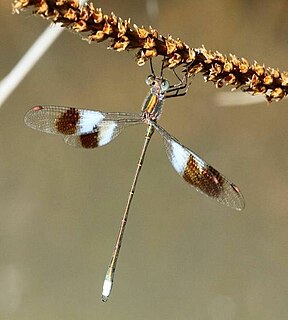
Zinnia is a genus of plants of the sunflower tribe within the daisy family (Asteraceae). They are native to scrub and dry grassland in an area stretching from the Southwestern United States to South America, with a centre of diversity in Mexico. Members of the genus are notable for their solitary long-stemmed flowers that come in a variety of bright colors. The genus name honors German master botanist Johann Gottfried Zinn (1727–59).

The elegant tern is a tern in the family Laridae. It breeds on the Pacific coasts of the southern United States and Mexico and winters south to Peru, Ecuador and Chile.

Tabernaemontana is a genus of flowering plants in the family Apocynaceae. It has a pan-tropical distribution, found in Asia, Africa, Australia, North America, South America, and a wide assortment of oceanic islands. These plants are evergreen shrubs and small trees growing to 1–15 m tall. The leaves are opposite, 3–25 cm long, with milky sap; hence it is one of the diverse plant genera commonly called "milkwood". The flowers are fragrant, white, 1–5 cm in diameter.

The ring-tailed vontsira, locally still known as the ring-tailed mongoose is a euplerid in the subfamily Galidiinae, a carnivoran native to Madagascar.

Thrinaxodontidae is an extinct family of cynodonts that includes the genera Thrinaxodon, Nanictosaurus, Nanocynodon, and Novocynodon, and possibly Bolotridon and Platycraniellus. All thrinaxodontids share a bony secondary palate. Thrinaxodontids are basal members of the cynodont clade Epicynodontia. Some studies consider the family a paraphyletic group, representing an evolutionary grade of basal epicynodonts rather than an actual clade.

The Nubian flapshell turtle or Nubian soft-shelled turtle is one of two species of softshell turtle in the genus Cyclanorbis of the Trionychidae family. It has historically been found in a wide range spanning Benin, Central African Republic, Chad, Ethiopia, Ghana, Nigeria, Sudan, and Togo. However, it has been very rarely recorded during the last 50 years and there is little hope that the species is extant in Ghana, Benin, Togo, Nigeria and Cameroon. In early 2019, a remnant population was found in the White Nile wetlands in South Sudan by Prof. Luca Luiselli and his team.

The buff-spotted flufftail is a species of bird in the family Sarothruridae. It is found in Angola, Botswana, Burundi, Cameroon, Republic of the Congo, Democratic Republic of the Congo, Ivory Coast, Equatorial Guinea, Ethiopia, Gabon, Guinea, Kenya, Liberia, Malawi, Mozambique, Nigeria, Rwanda, Sierra Leone, Somalia, South Africa, South Sudan, Swaziland, Tanzania, Uganda, Zambia, and Zimbabwe.

Chlorolestes is a genus of damselflies in the family Synlestidae. They are commonly known as Malachites.
Chlorolestes elegans is a species of damselfly in the family Synlestidae. It is found in Botswana, Malawi, Mozambique, South Africa, and Zimbabwe. Its natural habitats are subtropical or tropical moist montane forests and rivers. It is threatened by habitat loss.
Platycraniellus is an extinct genus of non-mammalian cynodonts. It is known from the Early Triassic Lystrosaurus Assemblage Zone of the Normandien Formation of South Africa. The type and only species is P. elegans.
Polycynodon is an extinct genus of therocephalians from the Late Permian of South Africa. It is known from the Cistecephalus Assemblage Zone. The type species was first described as Octocynodon elegans by South African paleontologist Robert Broom in 1940, but the name Octocynodon was preoccupied by a genus of labrid fish first described in 1904. Along with John T. Robinson, Broom instated Polycynodon as a replacement name for O. elegans in 1948. Polycynodon is classified in Baurioidea, although its relationship to other baurioid therocephalians is uncertain.
Gymnothamnion is a red alga genus in the family Wrangeliaceae.

Tabernaemontana elegans, the toad tree, is a shrub or small tree in the family Apocynaceae. It is native to eastern Africa.

Eilema elegans is a moth of the subfamily Arctiinae. It was described by Arthur Gardiner Butler in 1877. It is found in Ethiopia, South Africa, Zambia and Zimbabwe.
C. elegans most commonly refers to the model round worm Caenorhabditis elegans. It may also refer to any of the species below. They are listed, first in taxonomic order and, second, alphabetically.

Pelargonium elegans is a species of flowering plants in the family Geraniaceae.
Barleria elegans is a species of plants in the family Acanthaceae. It is found in South Africa.

The Normandien Formation is a Triassic-age rock formation located in Free State, South Africa. It is where the fossils of Ericiolacerta, a subtaxa of Ericiolacertidae, was found.












